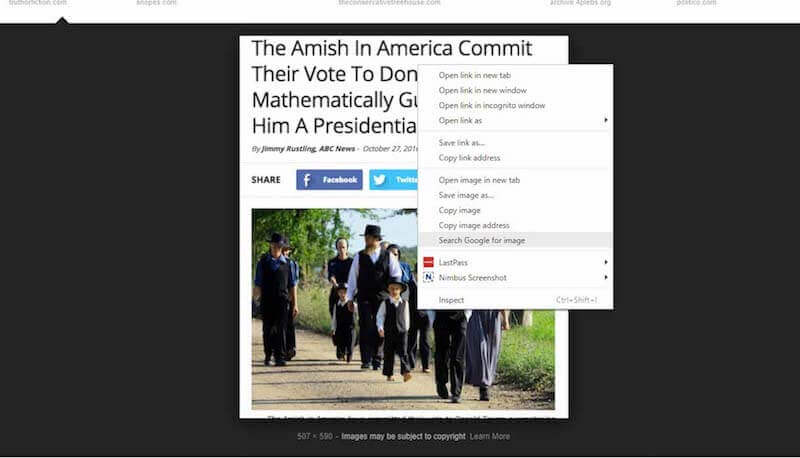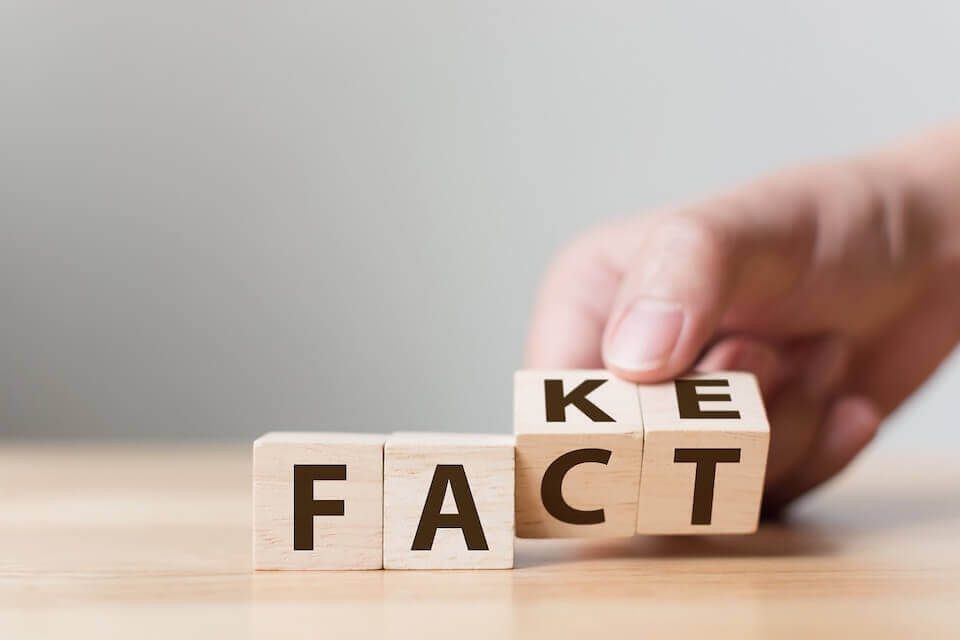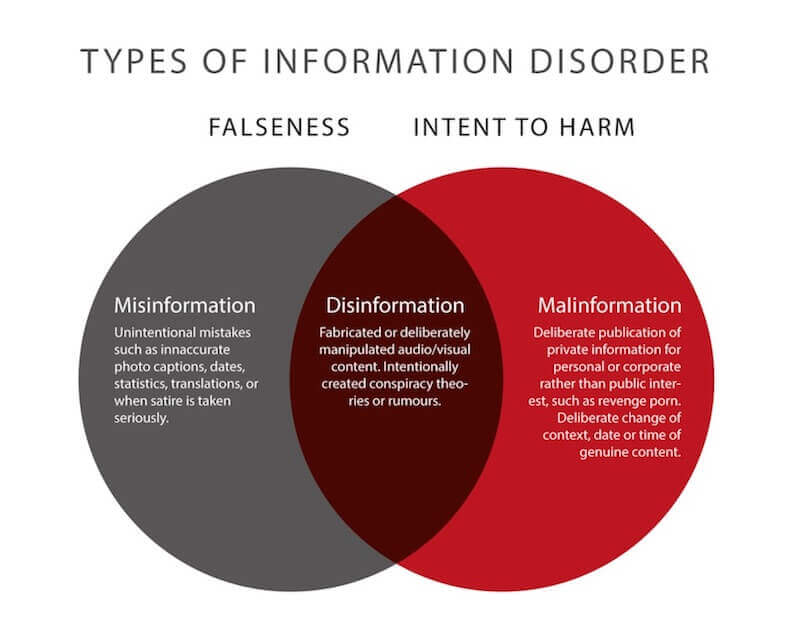Introduction
When you go to vote you just want the facts. You want to know the initiatives on the ballot, what your choices are, who the candidates are, what their platform is, and then you take a chance by voting. A chance that the candidate will actually deliver on promises made and a chance that your vote “yes” or “no” on initiatives will have the planned impact that was foreseen when the legislation was drafted.
Disinformation (aka fake news) and propaganda are not new to politics nor are they new to campaigning. What is new and developed in recent years is how many voters are online during election season and the numerous ways campaigns, legitimate or not, can reach internet users. If you are on social media or certain websites then you are more than likely going to see advertisements and information regarding the election. How do you know what’s real?
The 2016 presidential campaign and election has come and gone but the controversy of the election remains in full swing. Regardless of the actions and outcome, one of the issues that has been widely accepted by experts and everyday citizens alike is that disinformation was significantly present before and after the vote in November of 2016. In fact, Facebook and Twitter have just this July deleted 600+ accounts associated with influence campaigns.
What exactly is disinformation and how is it designed to cause strife and confusion? Daniel Funke, a reporter at the Poynter Institute stated, “The most effective disinformation draws on our underlying fears and world views. If a piece of information makes you feel scared, angry, or even smug, then it’s worth doing additional checks before resharing it.”
How is this related with misinformation, influence campaigns, and fake news? In this article we will review recent examples, how to decipher and identity disinformation, and how to protect yourself from these backhanded tactics that help cause such confusion, anger, and division in our country.
What is Disinformation?
Disinformation is the blend between misinformation and malinformation. Misinformation can be simple or significant unintentional mistakes such as an error in statistics or translations. Malinformation is the purposeful change of private information for personal or business interests. Disinformation is deliberately changing and manipulating content in order to spread rumors, conspiracy theories and propaganda. An influence campaign is specifically set up in with an objective in mind. Influence campaigns are highly organized and planned. There is planning concerning what disinformation to create, how, when and where to post it online, who to target, and how to respond to how people are digesting the disinformation. In modern history a number of countries, regimes, and special interest organizations are participating in this tactic in order to cause disruption to democratic processes in other countries and divide and strife between groups.
Disinformation is difficult to distinguish and anyone is susceptible, including professional TV and radio show hosts with millions of followers such as Sean Hannity, who was caught up in a series of fake articles posted on fringe news websites. These articles were tweeted and also posted to Facebook, somehow making it onto Hannity’s radio show. Even during the show he was interrupted and fed further misinformation. Luckily Hannity owned up to the mistake and admitted the error. This demonstrates how quickly disinformation can spread and the far-reaching impact. How many of Hannity’s listeners never read the tweeted correction and how many believe that disinformation to this day? Even when media sources find that they are caught up in or manufactured disinformation or malinformation and redact their stories, fire journalists etc., they still find ( like in the case of CNN ) that such content has far reaching consequences.
A lot of disinformation is labeled and referred to as fake news. News agencies are having a difficult time learning how to screen and identify disinformation so as not publish that material and fall into the trap of publishing fake news. No news agency is free from this error. The better question is to ask if the news agency that you use is one that constantly publishes disinformation, do they issue statements to correct mistakes made and mistruths published, do they inherently represent only one political or social ideology, do they practice objectivity when reporting, and do they mark opinion (editorials) articles as such, do they take disciplinary action against their journalists and reporters that constantly and unabashedly spread misinformation and disinformation? Be critical of your news sources as no organization is perfect but also cling to the sources that do their best to maintain journalistic integrity as Freedom of the Press is integral in our society.
How to Identify Disinformation

There are numerous examples of disinformation from our 2016 presidential election. A simple search on the internet will bring up those results. The campaigns were effective and an example would be the fake news article posted on a fake and illegal ABC News website titled, “Amish in America Commit Vote to Donald Trump, Mathematically Guaranteeing Him a Presidential Victory.” If one were to digest the material of the article it would be fairly easy to know it was fake news and intentional disinformation. For example, as stated in the fake article, there are not millions of Amish in the United States (there are just over 300,000 in the U.S. and Canada combined). The fake website and fake article didn’t stop the spread on social media. Shortly before the election this article was trending on Twitter and Facebook and considering all the other news happening simultaneously it was difficult for experts to persuade and bring into the public’s light that this was fictitious. Had more users more critically investigated the source and content of the article then the spread of the disinformation would have been limited. Many saw the headline, approved of such news, and retweeted or reposted. This is a typical pattern with the spread of fake news and disinformation. It often spreads faster than the truth.
Disinformation prevalent during 2016 has not subsided. Twice this year Facebook has had to delete and ban accounts associated with influence campaigns similar to in 2016. These campaigns are coordinated and organized. Following this discovery they deleted 600+ accounts associated with these influence campaigns. Facebook is especially cautious as of late considering being caught up in the Cambridge Analytica scandal.
5 How-Tos for Identifying Disinformation or Fake News:
Know before you share!
Follow the source, examine the website and make sure it’s the real deal and then read the content. Another good guideline is: if it makes you react then make sure to check if it’s real, ESPECIALLY if it feels too good to be true
Do a search on a search engine such as DuckDuckGo
- Has a fact checking website likeSnopes,PolitiFact, or FactCheck provided feedback concerning the legitimacy and veracity of on the article, meme, video, recording, etc.? These sites should make transparent their fact-checking process, such as this example from Media Bias Fact Check.
- What’s the original source? Is that source legitimate?
- Does original source have a Wikipedia page? If so, read it. If not, further consider why it would not. Wikipedia offers insight into the validity of a website or organization
- If it’s an image or meme do a reverse Google image search to find the original source, then search if that source is reputable or legitimate
How to do a reverse image search: right click on the image and then click, “Search Google for image”:

Check the comments (if available)
On the social media post or article, see if someone has already debunked the content
Is it based on a poll or survey available online?
Online surveys only reach a specific audience and are often victim to manipulation. There are no scientific controls in place to make sure that the results of these polls are objective and representative
Look at history and the timeline of the poster on social media
- How old is their account?
- Does their account only spread similar disinformation?
- Are they agenda oriented? This means do they only post and spread one type of information usually starkly in favor or against a specific individual, party or organization
- Does the account contain original user content or just reshare agenda oriented content?
How to Protect Yourself

Disinformation has become such a widespread issue and social media, search engines, and news platforms have had such trouble controlling the issue that now experts have put together whole courses on online information verification methods. While some of these are for journalists the fact remains that the best way to protect yourself from disinformation is to be able to identify the material from fake and real by yourself. We have put together a list of recommended resources:
- Online Verification Skills with Mike Caulfield (videos)
- First Draft’s online one hour course
- A toolbox put together by First Draft
- International Fact Checking Network (full of articles and resources)
- The News Literacy Project
All humans, especially when on the internet, absorb a high amount of information. Make sure you are critically taking in this information and not believing without verifying. It may seem tedious but it helps filter out the disinformation and see reality while on the internet.
Additionally, it’s ever important to protect your information while on the internet. Some parties could be very interested in targeting your demographic based on your browsing tendencies. They would use this information to target you with specific advertising and messaging. Some of this can be dangerous disinformation. Here we have a list of our resources for ensuring a safe and secure browsing experience in order to protect yourself from exploitation:
- The Best Web Browser Extensions for Internet Security
- Understanding Firewalls and How they Protect Your Computer and Data
- What Is Clickbait and How to Navigate It Securely
- How to Enjoy Facebook While Also Protecting Your Personal Information
- 8 Things to Know About Internet Trolls
Conclusion
Disinformation crosses any border and can enter any home. Unfortunately we live in an age where it seems parties that should be acting in our best interest are the ones engaging in the worst behavior, including disinformation. We cannot rely on government or large tech companies to protect us from being victim to disinformation, misinformation, or malinformation. The solution is that you, as a user, are able to approach all information critically and do a proper job dissecting the validity of what you read and see on the internet. We can also vote for and implore representatives to hold institutions accountable when engaging in these types of activities.
The heart of the internet and its infrastructure has always been its users and our home networks. Begin to consider how you can safeguard your network as well as your mind. As a populous evolves to critically think so can we create and implement solutions to the current disinformation issues and all involved and guilty parties. Vote by knowledge, not under the influence of scare tactics.

